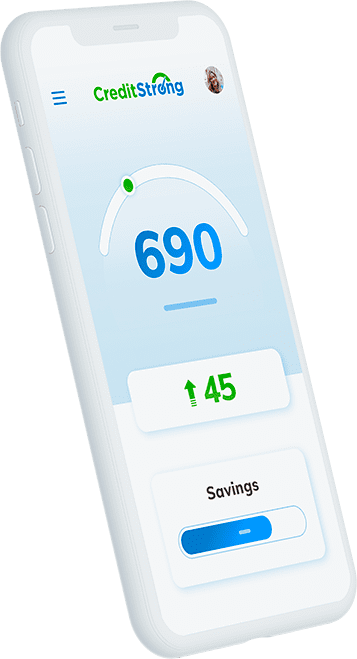The Real Deal On Authorized User Tradelines

Build strong credit
while you save

For many people, buying an authorized user tradelines seems like an effortless way to improve your credit. But they come with some serious risks!
In this article, we’ll talk about renting tradelines, and why you should avoid doing so. We’ll also cover some helpful alternatives for building your credit.
What Are Authorized User Tradelines?
You might be familiar with the term, “authorized user,” if you’ve been on the journey of rebuilding your credit. The term, “tradeline,” might be a foreign concept though. A tradeline is simply any credit account that’s open in your name. It could be a mortgage, credit card, or loan.
Put the two together, and you get a tool with the potential to help you boost your credit score with minimal effort. Authorized user tradelines are accounts that build credit. You pay to have it included on your credit report from someone else with a good credit history.
Essentially, you’re piggybacking off someone else’s good credit standing. This isn’t like a typical authorized user situation of asking to be added to the credit card of a family member or close friend. Renting an authorized user tradeline means you don’t know the other person.
Selling tradelines for money started when credit tradeline renting companies sprang up to meet consumer demand for ways to improve credit scores. With reputable tradeline dealers, you only get a few key details about the credit card holder such as their:
- Payment history
- Credit utilization rate
- Age of the account
- Credit limit
In exchange for a fee, you’re added to their credit card account. This doesn’t grant you the ability to make purchases though. It only adds their credit card to your credit history for a short period of time – usually, two months or however long you purchase it for.
Typically, you’d do this before applying for new credit.
The idea is that your score increases based on the addition of a seasoned tradeline in good standing. An established tradeline with a low utilization rate and great payment history transforms a previously limited credit profile.
Difference Between Primary User And Authorized Tradelines
When we talk about tradelines, there are two ownership types; primary user tradelines and authorized user tradelines. A primary user tradeline belongs directly to you. Your credit was checked to get the credit account. It shows on your credit report and affects your credit score.
You’re also financially responsible for maintaining the account.
You can use the funds within the credit limit for your own purposes. This makes primary user tradelines the most preferred type with lenders and credit bureaus because it’s a more accurate representation of your true credit risk.
Authorized user tradelines are the ones that someone has added you to after opening a primary user tradeline under their credit. While an authorized user gets the score benefit of being on the credit card, they don’t bear any responsibility for payments.
Most times, this comes in the form of parents adding their child onto a credit card as an authorized user to give them a head start instead of building credit from scratch. Other times, it’s used as an alternative to credit repair.

Does Renting Authorized Tradelines Work?
Renting tradelines works. It’s true. But it works best for a specific set of people. According to a study from the Federal Reserve, the people who saw the largest increases from authorized user tradelines met at least one of these characteristics:
- Their credit history didn’t include any tradeline over two years old
- People with two or fewer tradelines
- Less than two delinquencies within the past two years
That’s not to say that renting a tradeline won’t work if you don’t meet those standards. It might still work. It just won’t be as large of an increase as someone with a credit profile like this.
And let’s be honest – you don’t want to pay upwards of $150 for a credit score increase of five points.
It’s one way to build your credit score when you have a thin credit file. (Although as you’ll see – it’s not the best way of doing it!)
This might seem too good to be true—and it is. Although authorized user tradelines are helpful in some cases, they’re also a risky investment since they’re not sanctioned by credit card companies, credit bureaus, or lenders.
This is one of many cons of using authorized user (AU) tradelines to build your credit profile.
Cons of Authorized User Tradelines
AU tradelines make good credit scores accessible to people with thin credit files. It can create a significant boost in your credit score when added to your credit report. However, they also come with a few downsides worth considering.
They’re Expensive
Besides AU tradelines only being effective for people with limited credit history, they’re also expensive. Family and friends might let you become an authorized user on their credit cards out of kindness. That’s not the case for tradeline suppliers.
The average tradeline rental costs anywhere from $200 to $2000. The more seasoned the tradeline is, the more expensive it will be. A seasoned tradeline is a credit card with a high credit limit, excellent payment history, and an extensive account age.
That’s a lot of money to pay with no guarantee that it will raise your credit score.
They’re Shady
Credit piggybacking entices people with bad credit because it promises a quick fix, which means you pay less in interest for new credit lines. Using someone else’s excellent credit doesn’t always promise safety though.
When buying tradelines, you have to give up your personal information to the primary account holder for the tradeline to be added to your credit report. That includes:
- Social Security number
- Full name
- Date of birth
And you’re handing it to a complete stranger. Sounds safe, right?
Giving up that information opens you up to identity theft. That’s the opposite of what you need to build a good credit score.
In addition, this type of activity isn’t exactly supported by credit bureaus, credit card companies, or lenders. They see it as manipulating the credit system and misrepresenting your credit. This could result in fraud accusations.
They’re Risky
In some cases, buying tradelines ends without it posting to your credit report. Even if you’ve paid. Even if you’ve already handed over your personal information.
The chances of this happening depend on factors that include which credit card company it is, clerical errors, fraud holds, or a lock on the credit report. If the tradeline supplier doesn’t offer refunds, then you’ve lost hundreds or thousands of dollars with no credit score to show for it.
That’s very risky.
Some credit card companies will shut down the account if they find activity that signals tradeline selling. If the account closes, it won’t improve your credit score. What will impact your score is if the primary account holder makes a late payment. That hurts your credit instead of boosting it.
They’re Not Weighted As Highly As Primary Accounts
Back in 2009, the Fair Isaac Corporation (FICO) made adjustments to their credit scoring model which minimizes the effects of buying tradelines.
So now primary accounts are weighted higher than authorized user accounts. If you’re looking for a heavy increase, you might be disappointed.
When you apply for a credit account, creditors aren’t just looking at your credit score. They also comb through your credit report. When they notice a credit account that looks out of place, underwriters might still reject your application because of misrepresented creditworthiness.

Why CreditStrong Is A Good Alternative
Don’t take a gamble on authorized user tradelines. They won’t be a quick fix, but it will improve your credit scores in a way that works. You’ve likely already heard that you should improve your payment history, decrease credit utilization, try credit repair, or open a secured credit card.
Another option is to open a credit builder loan with CreditStrong. A credit builder loan helps you build credit as a primary account holder. But don’t worry, you won’t need a credit check to qualify with CreditStrong.
It’s a cross between a savings account and an installment loan. You choose the plan you want and start making payments. Once all of the payments have been made or the account has been closed, CreditStrong then releases those funds to you.
CreditStrong also reports your on-time payments to each credit reporting agency to help you build a stronger credit report.
So instead of potentially risking thousands of dollars for a tradeline or spending thousands on credit repair services, you could improve your own credit for a fraction of the cost.
Ready to improve your credit score without the risk? See how CreditStrong can help you!
Overall, authorized tradelines are a valid way to temporarily improve your credit score. They work best for users with very limited credit reports and minimal delinquencies. They’re also very risky and are considered fraud.
If you’re looking for a more long-term impact on your credit report, you’ll need to use other options.
CreditStrong helps improve your credit and can positively impact the factors that determine 90% of your FICO score.
